Peace and Preservation at Perryville
Night fell early over the Perryville battlefield, and I could not remember when I had seen so many stars. Across part of the sky, the Milky Way wandered like a light tendril of fog.
It had been fifteen years, anyway, since I’d been to Perryville. The battlefield isn’t really on the way to anywhere for me—particularly since I fly so much these days—so I just hadn’t had an opportunity to go there. Fortunately, the American Battlefield Trust needed some videos from Perryville, so Garry Adelman and I hit the road to central Kentucky.

We were on the back side of autumn. Most of the leaves had crisped from orange and gold to brown, although color still airbrushed some of the trees. The landscape looked yellowed and browned, flushed in places with patches of tired green, but a blue sky with streaks of white clouds canopied us. Grayer clouds mustered in the distance, pulled onward by a breeze. A front was moving in.
We started the day atop Open Knob, once a Federal artillery position that Confederates overran early in the battle. The knob felt like one of the tallest places on the battlefield, but to the southwest, another knob provided a place for Federals to rally; beyond that, a third knob provided yet another rallying point. From where we stood, deceptive terrain created an optical illusion that made the other two knobs indistinguishable from each other.
In fact, the whole battlefield was far trickier than any map might suggest. If you took an egg crate and laid it across the landscape, that’s what Perryville reminded me of. The topography was knobby and hilly, with those knobs and hills arranged roughly in ridges. But the valleys and sinkholes between the ridges posed significant challenges for both sides. The uphill slopes exhausted retreating Federals and attacking Confederates alike. Knobs split commands in two as the men advanced. Swales hid entire regiments as they advanced, giving them the chance to suddenly pop up in front of enemy artillery and infantry.
The topography also deceived Federal commander Don Carlos Buell, who had only a single corps actively engaged in the day’s fighting, with two other corps in reserve. Tucked in an acoustic shadow, he didn’t hear much of the battle and dismissed initial reports as mere skirmishing. By the time Buell realized the extent of the engagement, night had settled in. Confederate commander Braxton Bragg, having won the day, opted for withdrawal before Buell mobilized the rest of his forces.
Today, the battlefield consists of more than 1,200 acres over nearly 4 square miles, much of it protected through the efforts of the American Battlefield Trust. The land here has things to teach us—as it does everywhere—if we just take the opportunity to look for ourselves.
Joni House and Chad Greene from the Friends of Perryville Battlefield walked me and Garry through the action of October 8, 1862, and kept us oriented. Actor Steve Zahn, a huge advocate of battlefield preservation, joined us, too. Steve’s energy and hail-fellow-well-met ebullience matched Garry’s—no small feat!—and bubbled through the shoot.
On our second location—the final Federal position—Joni showed us an artillerist’s sword used in the battle, borrowed from the town museum. As Joni shared the artillerist’s story, we took the chance to appreciate the sword, which resembled a weapon carried by Roman legionnaires.
We finished the video shoot just as the breeze finally brought a fine sprinkle—enough to wrap us up, but nothing that stuck around long once we packed it in.
Below the ridge runs Doctor’s Creek, the only source of fresh water on the otherwise-parched battlefield. The creek was nearly dried up, but soldiers on both sides suffered intense thirst, and they fought over the little water that remained in the creek’s shallow pools.
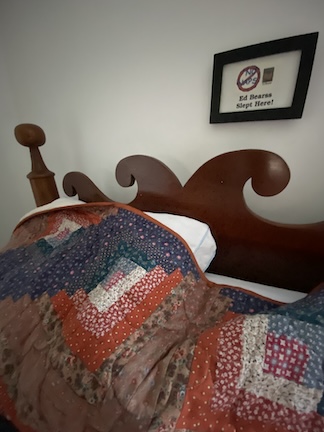 Garry and I drove down into the valley to the Squire Bottom house, a wartime structure updated with modern conveniences and used by the Friends as a guest house. The interior still shows damage from the battle. Above my bed, a sign declared “Ed Bearss slept here.” I got to, too.
Garry and I drove down into the valley to the Squire Bottom house, a wartime structure updated with modern conveniences and used by the Friends as a guest house. The interior still shows damage from the battle. Above my bed, a sign declared “Ed Bearss slept here.” I got to, too.
And it was there, on the front porch of that old home, that Garry and I sat in wooden rocking chairs and called our families and marveled at the stars. Being in the middle of nowhere meant no light pollution. I could stare up into infinity.
I’m certain no man in either army on this field enjoyed that kind of peace.
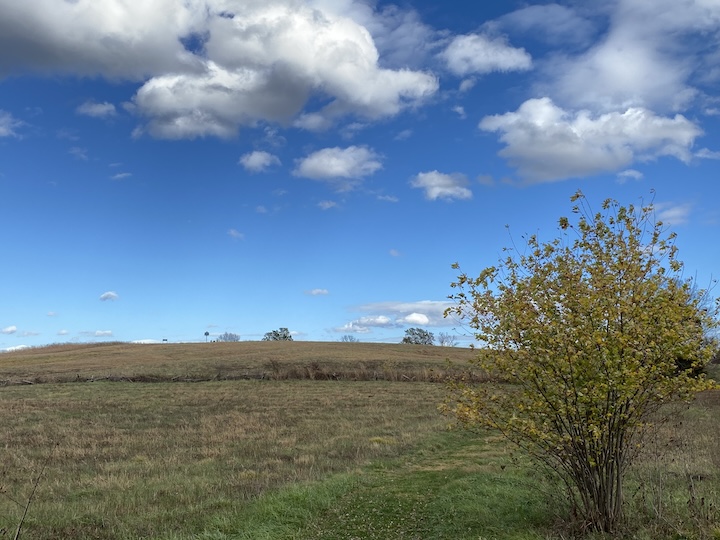
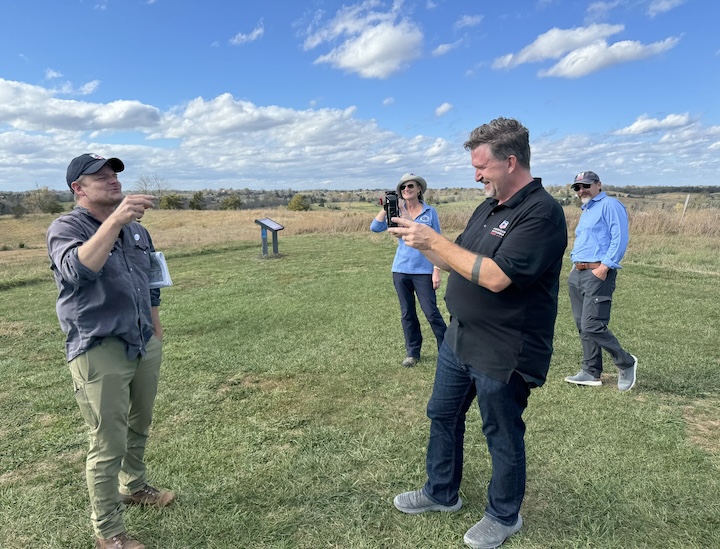
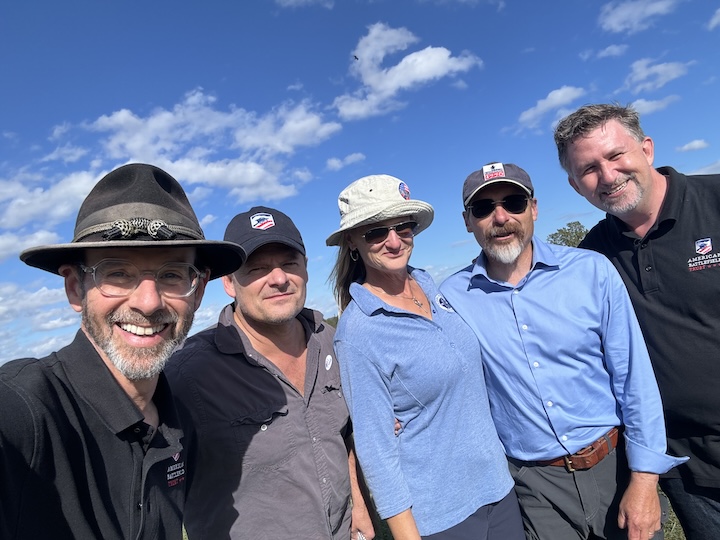
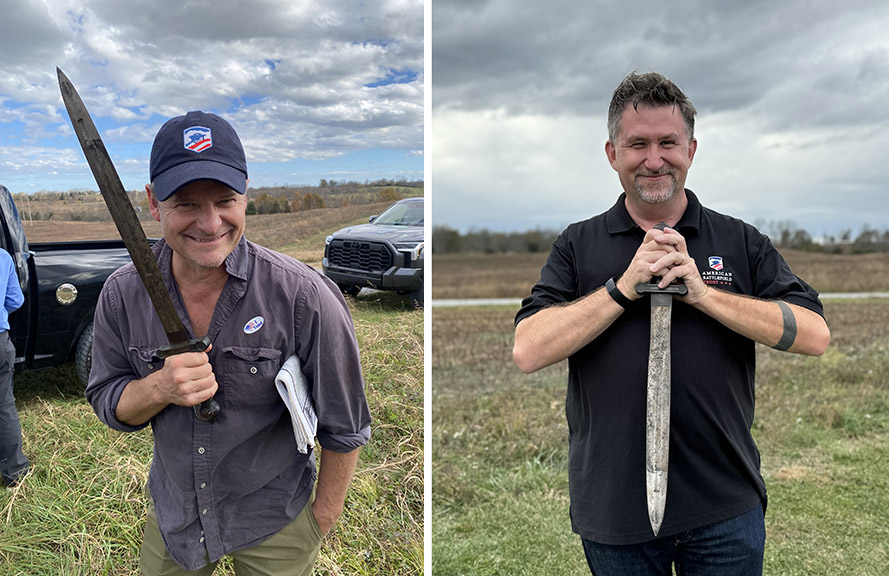
It must have been a dry period in general over several years since both the Perryville campaign and the Chickamauga campaign were impacted by brutal droughts. While you guys were in the area, I hope you got to enjoy Bardstown, which is nearby.
Beautiful imagery.
But what’s with that sword?
Chris: Nice article. What the ABT and others have accomplished there in preservation is impressive, to say the least.
On the list for late Spring, 2025
You make me want to go back!